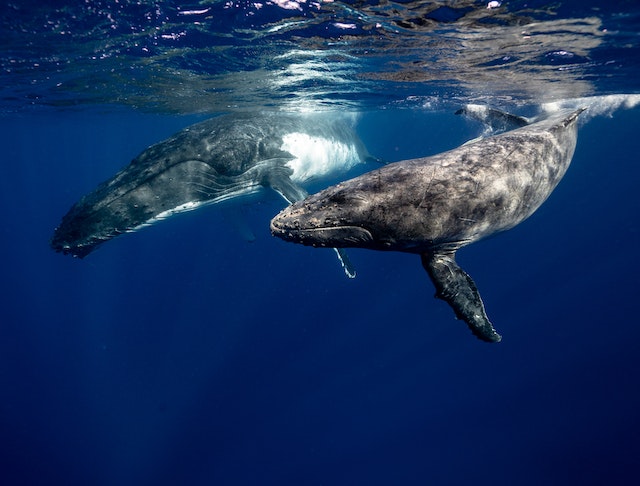Over the years, we have seen an alarming increase in pollution levels in our oceans and rivers. This has not only affected marine life but also impacted human health. As technology advances, scientists are looking for innovative ways to protect our natural resources. Enter the Cyborg Goldfish- a new weapon in the fight against environmental degradation! These tiny fish are being used as environmental monitors, helping us keep track of pollutants and other harmful substances that threaten our waterways. In this article, we will explore how these little cyborgs work and their potential benefits and limitations when it comes to protecting our coastal regions and rivers from harm. So let’s dive right into this exciting world of technology-assisted conservation!
What are Cyborg Goldfish?
Cyborg Goldfish are not your average pet fish. They are actually live goldfish that have been fitted with small electronic devices or sensors to monitor the quality of water in which they swim. The technology used to create these cyborgs is known as “biobotics” and it involves implanting microchips, electrodes or other types of sensors into the fish’s body.
These tiny electronic devices help scientists keep track of various aspects such as pH levels, temperature fluctuations, oxygen saturation rates and even detect pollutants like heavy metals or pesticides present in the surrounding water. This information can then be analyzed by researchers to understand how different factors affect aquatic life and ecosystems.
The Cyborg Goldfish technology is still relatively new, but it shows a lot of promise for environmental monitoring purposes. These living sensors can provide real-time data on water quality conditions without disturbing marine life environments or disrupting natural processes.
While some may argue that cyborg goldfish are just another example of humans exploiting animals for their own benefit, others see them as a valuable tool for protecting our planet’s vital resources – an innovative solution to an age-old problem.
How do they work as environmental monitors?
Cyborg goldfish are a result of merging biology with technology. These fish have been implanted with small electronic devices that allow them to monitor environmental changes in rivers and oceans, such as water temperature, acidity levels, and pollution.
The device implanted in the cyborg goldfish is designed to mimic the function of the lateral line found in real fish. The lateral line is a system of sensory cells that allow fish to detect vibrations, pressure changes, and movements in their surroundings. Cyborg goldfish use this electrical sensing ability to collect data on their environment.
Once equipped with these sensors, cyborg goldfish can effectively act as environmental monitors by swimming around areas where traditional monitoring methods may not be feasible or effective. They can also provide more accurate and real-time data than other monitoring technologies.
Furthermore, because they are living organisms rather than machines or static sensors, cyborg goldfish can adjust to changing conditions much better than other technologies which require constant calibration.
Using cyborg goldfish as environmental monitors is an innovative approach that holds great potential for improving our understanding of aquatic environments and protecting them from harm caused by human activities.
Benefits of using Cyborg Goldfish in coastal and river protection
Cyborg goldfish have been gaining popularity as environmental monitors due to their various benefits. One of the primary advantages is their ability to detect and monitor water quality in real-time. By implanting sensors into the goldfish, scientists can obtain accurate data on parameters such as temperature, pH levels, and dissolved oxygen.
This technology allows for quicker detection of harmful changes in water conditions that could indicate pollution or other environmental hazards. With this data, researchers can take immediate action to prevent further damage and protect vulnerable ecosystems.
Another benefit of using cyborg goldfish is their cost-effectiveness compared to traditional monitoring methods. Traditional monitoring techniques require expensive equipment and skilled personnel which may not be feasible in all locations. Cyborg goldfish provide a simple yet effective solution that requires less manpower and resources while still delivering reliable results.
In addition, cyborg goldfish provide a non-invasive method for measuring water quality without disturbing aquatic life. Unlike traditional techniques that involve taking samples from the environment possibly endangering marine life or disrupting its habitat, these fish continue with their normal activities while collecting valuable information on behalf of scientists’ researches.
The use of cyborg goldfish technology offers numerous benefits for protecting our oceans and rivers by providing real-time monitoring at an affordable cost without harming underwater habitats or aquatic species within them.
Limitations of Cyborg Goldfish as environmental monitors
While Cyborg Goldfish have proven to be effective in monitoring water quality, there are still limitations that need to be addressed. One of the biggest challenges is maintaining their health and well-being while keeping them functional as environmental sensors.
Since this technology is still relatively new, there’s limited knowledge on the long-term effects it may have on goldfish. It’s unknown if prolonged exposure to devices can cause harm or discomfort for these creatures. As such, scientists must prioritize animal welfare when designing these cyborgs.
Another limitation is the accuracy of data collected by Cyborg Goldfish. These devices rely on sensors embedded within their bodies to detect pollutants and other environmental factors. However, they may not always provide accurate measurements due to interference from external factors such as temperature changes or debris in the water.
This technology has its limits with regards to coverage area since each device can only monitor a specific region within a body of water. This means deploying numerous Cyborg Goldfish across larger areas can become both time-consuming and costly.
Despite these limitations, we should continue exploring how technology like Cyborg Goldfish could help protect our oceans and rivers from pollution so long as we address any ethical concerns surrounding their use while simultaneously improving their design and functionality over time.
Conclusion
The use of Cyborg Goldfish as environmental monitors is a promising technology that has the potential to revolutionize coastal and river protection. By utilizing this innovative approach, scientists can collect real-time data on water quality and pollution levels in aquatic ecosystems.
The benefits of using these fish include their ability to swim freely in their natural habitats while collecting valuable environmental data. Moreover, they are low-cost alternatives compared to traditional monitoring methods such as satellite imagery or buoys.
However, there are limitations to this technology which need consideration before widespread adoption. For instance, it’s unclear how long these fish can continue functioning effectively without adverse effects on their health.
Despite these limitations, the potential for using Cyborg Goldfish as environmental monitors remains an exciting prospect for preserving our oceans and rivers’ health. As research continues into developing more sustainable forms of monitoring our environment’s changes, we have hope that we might yet succeed in safeguarding our planet’s future for generations to come.










